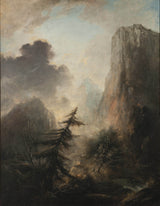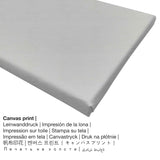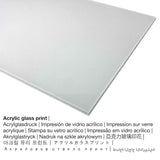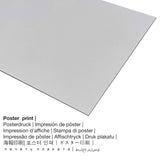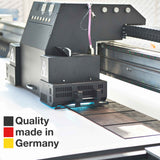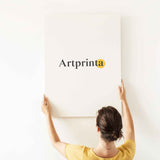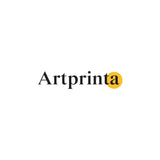Elias Martin, 1780 - Okirikiri ihunanya nwere Spruce - mbipụta nka mara mma
Ụtụ gụnyere. Mbupu gbakọrọ na ndenye ọpụpụ.
Kedu ụdị ngwaahịa nka anyị na-egosi ebe a?
a nka ochie ọrụ nka Romantic Landscape with Spruce nke nwoke mere Swedish artist Elias Martin. The version of the artwork measures the size: Ogologo: 115 cm (45,2 ″); Obosara: 89 cm (35 ″) Ekebere: Elu: 131 cm (51,5 ″); Obosara: 106 cm (41,7 ″); Omimi: 9 cm (3,5 ″). This work of art can be viewed in in the Nationalmuseum Stockholm's digital art collection, which is located in Stockholm, Stockholm County, Sweden. With courtesy of - Nationalmuseum Stockholm na Wikimedia Commons (public domain license).Additionally, the artwork has the following creditline: . The alignment is in Eserese format ya na oke onyonyo nke 3: 4, nke pụtara na ogologo bụ 25% mkpụmkpụ karịa obosara.
What does the website of the Nationalmuseum Stockholm write about this 18th century work of art painted by Elias Martin? (© Copyright - Nationalmuseum Stockholm - www.nationalmuseum.se)
English: A large pine tree dramatically leans into the picture and points towards the high cliffs in the background. In the sky, dark clouds clash as sunlight forces its way through the shrouds of fog. Through the use of the light and haze, the artist attempts to depict the power of the wild, mountainous landscape. This picture was painted by Elias Martin. In the 1760s and 70s, he spent a total of twelve years in England. During this period, English landscape art experienced a golden age – artists such as Thomas Gainsborough and Richard Wilson strove to capture the typical English nature on canvas. They were fascinated by the wild and free landscape and this lead to the emergence of a new landscape tradition that differed radically from the classicistic, idealized landscape of southern Europe that Claude Lorrain, among others, had established. This painting shows how strongly Martin had been influenced by his contemporary English colleagues. The painting, most likely painted upon his return to Sweden in 1780 – is an exquisite example of the period’s new interest for wild and untamed nature. The sprawling pine, the rapids, and the inhospitable, shear cliffs, differ markedly from the idyllic or pastoral renditions of nature that, up till then, had dominated landscape art. Have you discovered the people in the picture yet? In the gloom to the left of the pine tree, a figure can be seen, standing in front of a small cabin. Here, Martin strives to depict the experience of the sublime - that is, man’s smallness in relation to nature’s overwhelming power. The sublime became a central theme in the romantic landscape art of the 1800s. For Martin, the experience of the sublime was linked to a Christian, religious experience of nature. Upon describing his paintings or experiences of nature, Martin’s choice of words was often religion-inspired, and in the face of a landscape and the forces of nature, he felt the presence of God. En stor gran lutar sig dramatiskt in i bilden och pekar upp mot de höga klipporna i bakgrunden. På himlen tränger solen fram mellan dimslöjor och mörka moln. Genom det dramatiska ljuset försöker konstnären fånga kraften i det vilda klipplandskapet. Efter tolv år i England återvände Elias Martin 1780 hem till Sverige. Den här målningen tillkom vid den tiden och vittnar om intryck från den samtida brittiska landskapskonsten. Ett nytt intresse för den otämjda naturen spelade där en framträdande roll.
Ozi nka ahaziri
| Aha nke ihe nka: | "Romantic Landscape with Spruce" |
| Nhazi nke ihe nka: | sere |
| Okwu nche anwụ: | nka ochie |
| oge: | 18th narị afọ |
| Afọ nka: | 1780 |
| Ogologo afọ nka nka: | 240 afọ |
| Akụkụ izizi nka: | Ogologo: 115 cm (45,2 ″); Obosara: 89 cm (35 ″) Ekebere: Elu: 131 cm (51,5 ″); Obosara: 106 cm (41,7 ″); Omimi: 9 cm (3,5 ″) |
| Ụlọ ihe ngosi nka / mkpokọta: | National Museum nke Stockholm |
| Ebe ngosi nka: | Stockholm, Obodo Stockholm, Sweden |
| Ebe nrụọrụ weebụ ihe ngosi nka: | www.nationalmuseum.se |
| License: | ngalaba ọha |
| Site n'aka: | Nationalmuseum Stockholm na Wikimedia Commons |
Ose okwu
| Aha onye nka: | Elias Martin |
| Aha ndị ọzọ: | Martin, Martin of Bath, Martin Elias, Elias Martin, Martyn, Martyn Elias, Elias Martin of Bath |
| okike nke onye nka: | nwoke |
| Obodo onye nka: | Swedish |
| Ọrụ onye na-ese ihe: | onye na-ese ihe |
| Country: | Sweden |
| Nkewa onye nka: | nna ukwu ochie |
| Nwụrụ na afọ nke: | 79 afọ |
| Afọ ọmụmụ: | 1739 |
| Afọ ọnwụ: | 1818 |
Akụrụngwa ndị ahịa anyị nwere ike ịhọrọ
For every fine art print we offer different materials & sizes. Select your preferred material and size among the subsequent options:
- Mbipụta kwaaji: A printed canvas, not to be mistaken with a canvas painting, is an image printed onto canvas fabric. Canvas Prints have the advantage of being relatively low in weight, meaning that it is easy and straightforward to hang the Canvas print without the support of extra wall-mounts. Hence, a canvas print is suited for any type of wall.
- Mpempe akwụkwọ (ihe kwaaji): The poster is a UV printed flat canvas with a granular texture on the surface, which resembles the actual version of the artwork. Please keep in mind, that depending on the size of the poster print we add a white margin of something between 2-6cm round about the print, which facilitates the framing with your custom frame.
- Mbipụta iko acrylic (nke nwere ezigbo mkpuchi iko): An print on acrylic glass, often denoted as a print on plexiglass, makes your favorite original into décor and makes a good alternative option to aluminium or canvas fine art replicas. Your favorite artwork will be custom-made thanks to the help of modern UV print technology. It makes sharp and vivid print colors. The great upside of a plexiglass print is that contrasts as well as color details become identifiable because of the fine gradation in the print. The plexiglass with real glass coating protects your chosen art replica against sunlight and heat for many decades.
- Mbipụta ọla (aluminium dibbond): An Aluminium Dibond print is a print material with an outstanding depth - for a modern impression and non-reflective surface. A direct Aluminium Dibond Print is the perfect start to fine art prints produced with aluminum. The white & bright parts of the original artwork shine with a silky gloss, however without the glare. The colors of the print are luminous and bright, the details are very clear.
Ngwaahịa a
| Ụdị ngwaahịa: | nka nka |
| Usoro mmeputakwa: | dijitalụ mmeputakwa |
| Produzọ mmepụta: | Mbipụta UV ozugbo |
| Mmalite nke ngwaahịa a: | German mmepụta |
| Stockdị ngwaahịa: | a na-achọ |
| Ojiji ngwaahịa: | ihe ndozi ụlọ, mgbidi gallery |
| Ntuziaka onyonyo: | nhazi ihe osise |
| Oke akụkụ: | 3: 4 |
| Nkọwa nke oke akụkụ akụkụ: | ogologo bụ 25% mkpụmkpụ karịa obosara |
| Ụdị ihe dị iche iche: | akwụkwọ mmado (akwụkwọ kwaaji), mbipụta enyo acrylic (nwere ezigbo mkpuchi iko), mbipụta akwa akwa, mbipụta ọla (aluminium dibbond) |
| Mbipụta kanvas (akwa akwa na etiti ihe ndọtị): | 30x40cm - 12x16", 60x80cm - 24x31", 90x120cm - 35x47", 120x160cm - 47x63" |
| Mbipụta iko acrylic (nke nwere ezigbo mkpuchi iko): | 30x40cm - 12x16", 60x80cm - 24x31", 90x120cm - 35x47" |
| Nhọrọ nke mbipụta akwụkwọ mmado (akwụkwọ kwaaji): | 30x40cm - 12x16", 60x80cm - 24x31", 90x120cm - 35x47" |
| Mpempe aluminom (aluminium dibond ihe) nha: | 30x40cm - 12x16", 60x80cm - 24x31", 90x120cm - 35x47" |
| Nhazi mbipụta nka: | enweghị etiti |
Nkwupụta iwu: We try our best to describe our art products with as many details as we can and to exhibit them visually. Please keep in mind that the tone of the print materials and the printing might differ marginally from the image on the monitor. Depending on the settings of your screen and the condition of the surface, not all color pigments will be printed one hundret percent realistically. Given that all the fine art prints are processed and printed manually, there may as well be slight variations in the size and exact position of the motif.
Edochiri ederede a site na nwebiisinka © | Artprinta (www.artprinta.com)

